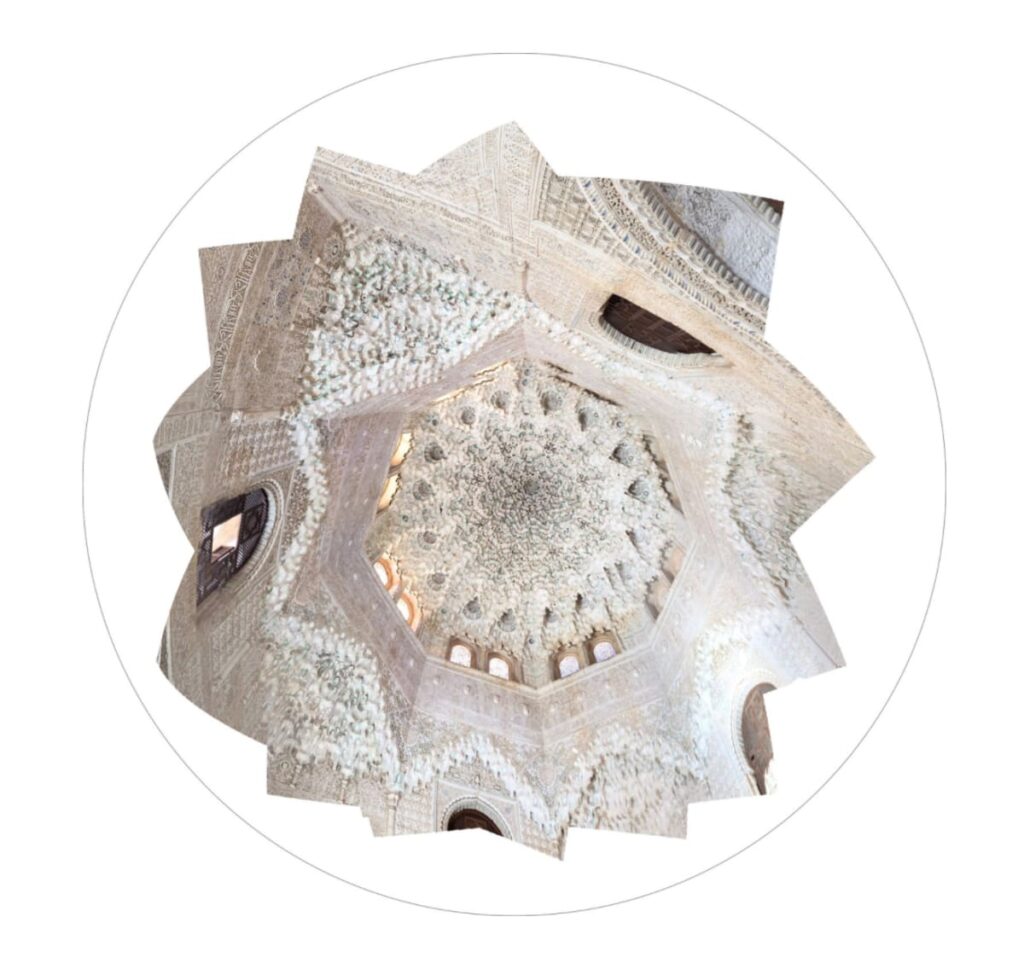Collection Item Image/s
Muqarnas Chamber, Alhambra
Theresa Ganz
Muqarnas Chamber, Alhambra, 2017
Archival pigment print
43 inch diameter
Ruane Center for the Humanities, Ground Floor
About the Work
The Alhambra in Granada, Spain, is a distinctive medieval palace, known for its sophisticated planning, complex decorative architecture, and many gardens and fountains. Initially designed as a military zone, the Alhambra became the royal residence and court of the Emirate of Granada in the thirteenth century. Established and designed by the Nasrid Dynasty, the last Muslim dynasty in the Iberian Peninsula, the first palace took the name of founding king Mohammed ibn Yusuf Ben Nasr al-Ahmar, better known as Alhamar. After the conclusion of the Christian Reconquista, the Alhambra became the Royal Court of Ferdinand and Isabella, who partially altered it in the Renaissance style.
The dome of the Alhambra showcases a type of repetitive vaulting signature to Islamic architecture. The vaulting, called muqarnas, is both structurally necessary and ornamentally significant—it allows a dome to tower to great heights and symbolizes the compounding growth and complexity of Islamic ideology. Ganz’s digital collage presents an accurate depiction of the Alhambra’s Muqarnas Chamber as both sturdy and organic. In making visible the many compositional layers of this artwork, she uses the muqarnas to conjure parallels between Alhambra’s culturally hybrid architecture and regenerative natural forms, like honeycombs, stalactites, or nautili.

